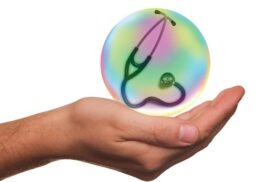Are you ready to dive into a world filled with creativity, beautiful designs, and endless possibilities? Papercraft, the art of creating objects from paper, offers a fantastic way to unleash your imagination and bring your ideas to life. In this blog post, we’ll explore the different types of papercraft, essential tools and materials, digital resources for design, and project ideas for every skill level. Get ready to embark on an incredible journey of paper-transforming magic!
Table of Contents
Short Summary
Unlock your creativity with papercraft – explore types, techniques and tools!
Discover projects from beginner to advanced & tips for success in papercrafting.
Get ready to unleash your imagination and embark on a world of creative adventures!
Exploring Papercraft: Types and Techniques
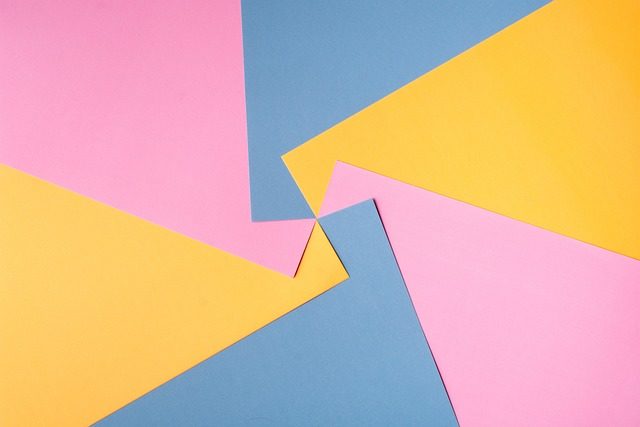
Papercraft, also known as paper crafts, has a vast array of techniques and types to explore, allowing you to create stunning paper models, folded art forms, and various assembly methods. Each type of papercraft has its own unique charm and challenges, ensuring you’ll never run out of creative avenues to discover.
From creating intricate paper models to mastering the delicate art of origami, there’s always something new to learn and experiment with in the world of papercraft. As you delve deeper into this fascinating craft, you’ll uncover a treasure trove of techniques for folding, cutting, and assembling your paper creations.
Paper Models
Paper models are a fantastic way to bring three-dimensional objects to life using nothing but paper and a few essential tools. Some of the most popular types of paper models include origami, quilling, and card making. Each of these techniques requires a unique set of tools and skills, opening up a world of creative possibilities for you to explore.
There’s something incredibly satisfying about transforming a flat piece of paper into a stunning 3D model. With a little patience and practice, you’ll soon be able to create an array of beautiful paper models that showcase your artistic prowess and attention to detail.
Folded Art Forms
Folded art forms take papercraft to a whole new level, offering a wide range of artistic possibilities. Kirigami, for example, is a captivating paper art form that involves cutting and folding paper to create intricate designs. It’s similar to origami but introduces the element of cutting to add even more depth and complexity to the final piece.
Another fascinating folded art form are pop-up cards, which reveal a three-dimensional design when opened. Pop-up cards can range from simple shapes to elaborate scenes, offering a delightful surprise for the recipient.
Mastering folded art forms like kirigami and pop-up cards will provide you with endless opportunities to wow your friends and loved ones with your papercraft skills.
Assembly Techniques
Assembly techniques play a crucial role in the world of papercraft, as they determine how your paper creations come together. Gluing, cutting, and scoring are some of the most commonly used techniques in papercraft assembly, helping you achieve clean, precise results.
In some cases, you might even venture beyond paper and work with materials like wood, using advanced assembly methods such as joinery. No matter what materials and techniques you choose, mastering the art of assembly is essential for transforming your paper pieces into stunning works of art.
Essential Papercraft Tools and Materials
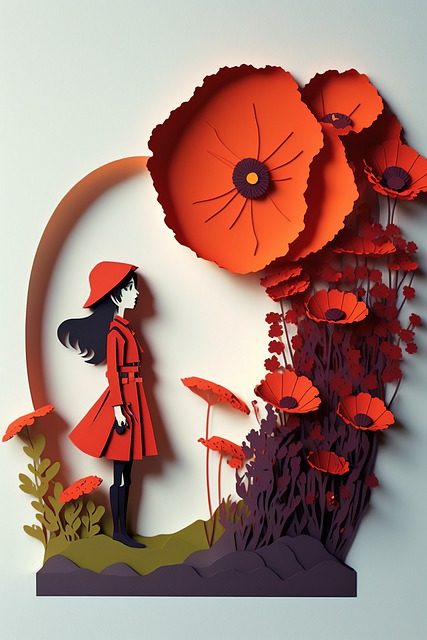
To create beautiful papercraft projects, you’ll need a few essential tools and materials. From cutting tools and adhesives to different types of paper, having the right supplies on hand will make it much easier to bring your ideas to life.
In the following sections, we’ll delve deeper into the world of papercraft tools and materials, helping you build a solid foundation for all your future projects. With these essentials at your fingertips, you’ll be well-equipped to tackle even the most ambitious papercraft challenges.
Cutting Tools
Cutting tools are indispensable in the world of papercraft, allowing you to shape and trim your paper with precision. Some examples of cutting tools you’ll want in your arsenal are:
Scissors
Craft knives
Rotary cutters
Guillotine paper cutters
Paper trimmers
These tools, along with other tools, will help you achieve clean and accurate cuts in your papercraft projects, making each tool an essential part of your crafting process.
Scissors are great for basic cutting tasks and trimming edges, while craft knives excel at cutting intricate shapes and making precise cuts. Cutting mats, on the other hand, are essential for protecting your workspace from damage caused by sharp tools.
By investing in a variety of cutting tools, you’ll be prepared to tackle any papercraft project that comes your way.
Adhesives
Adhesives play a vital role in papercraft, ensuring your creations stay together and maintain their shape. Some popular adhesives used in papercraft projects are:
Glue sticks: perfect for adhering paper to paper
Double-sided tape: works well for attaching paper to other surfaces like wood or plastic
Hot glue guns: provide a strong bond and are great for attaching heavier embellishments or 3D elements to your papercraft projects.
Hot glue guns, on the other hand, are ideal for bonding paper to materials like wood or plastic. By familiarizing yourself with these different adhesives, you’ll be better equipped to choose the right one for your papercraft needs.
Paper Selection
Selecting the right paper for your papercraft project is crucial, as it can greatly impact the final result. Factors to consider when choosing paper include weight, texture, and color, as each type of paper has its own unique properties. Some examples of the types of paper you can use in your papercraft projects are:
Cardstock
Construction paper
Patterned paper
Vellum
Specialty paper
Experimenting with different paper types will not only help you find the perfect match for your project, but also expand your creative horizons as you discover new textures and color combinations.
Digital Tools for Papercraft Enthusiasts
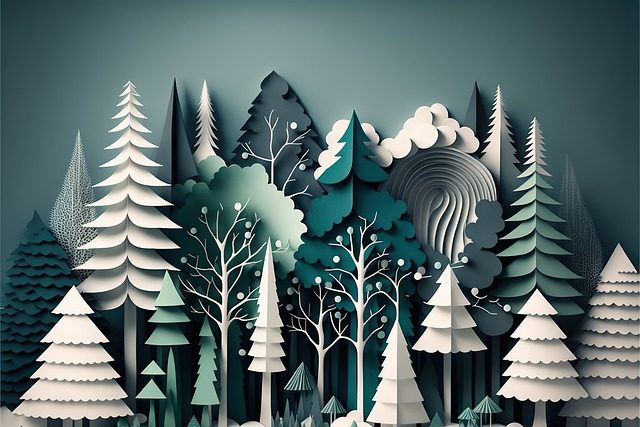
In today’s digital age, there are a wealth of tools and resources available to help you take your papercraft projects to new heights. From design software like Inkscape and Blender to online resources for templates and tutorials, these digital tools can add a whole new dimension to your papercraft creations.
In the following sections, we’ll explore some of the best digital tools for papercraft enthusiasts, offering tips and insights on how to make the most of these resources. Get ready to embark on a digital papercraft adventure that will elevate your skills and open up a world of creative possibilities!
Design Software
When it comes to designing your papercraft projects, software like Inkscape, Blender, and online box generators can be incredibly helpful. These programs allow you to create intricate designs, generate folding tabs, and even design 3D models that can be printed and assembled.
Inkscape, for example, offers a range of extensions that can streamline the papercraft design process, such as Tabgen for generating flaps and the Packaging Tools extension for creating pre-defined packaging forms. By incorporating design software into your papercraft workflow, you’ll have the power to create truly unique and professional-quality projects.
Online Resources
The internet is a treasure trove of resources for papercraft enthusiasts, offering a wealth of templates, tutorials, and inspiration to fuel your creativity. Some fantastic resources available online include:
CubeeCraft
Papercraft World
Canon Creative Park
Papermau
Whether you’re looking for a step-by-step guide to creating a specific project or seeking inspiration for your next papercraft masterpiece, these online resources are invaluable. With a wealth of knowledge at your fingertips, you’ll be well-prepared to tackle any papercraft challenge that comes your way.
Printing Tips
Printing is an essential step in bringing your digital papercraft designs to life, and getting it right can make all the difference in the final result. To ensure the best possible outcome, it’s important to use the right printer settings, choose the appropriate paper type, and select the correct ink type for your project.
For example, if you’re creating a paper model, a laser printer and thicker cardstock paper are recommended, while an inkjet printer and thinner paper are more suitable for folded art forms. By taking the time to select the right printing materials and settings, you’ll be well on your way to producing stunning papercraft projects that showcase your skills and creativity.
Learn more about Printers for crafting? visit The best printers for crafting.
Papercraft Project Ideas and Inspiration
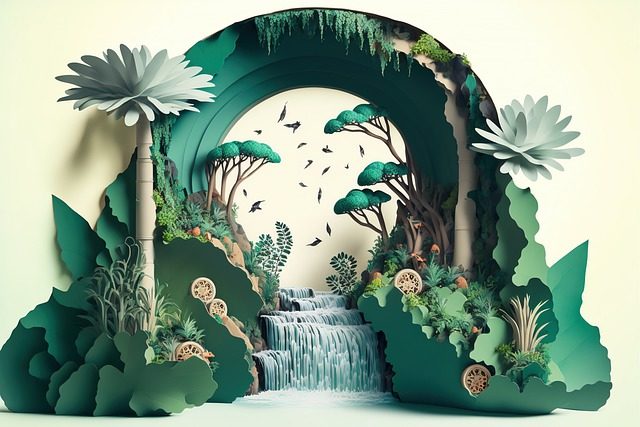
Now that you’re familiar with the various types of papercraft, essential tools and materials, and digital resources, it’s time to dive into some project ideas and inspiration. In the following sections, we’ll explore beginner, intermediate, and advanced papercraft projects to help you find the perfect starting point for your creative journey.
Get ready to unleash your creativity and embark on a world of papercraft adventures on each page!
Beginner Projects
If you’re new to papercraft, starting with simple projects like origami, greeting cards, and paper flowers is a great way to build your skills and confidence. These beginner-friendly projects require minimal tools and materials, making them an ideal introduction to the world of papercraft.
As you gain experience and become more comfortable with the basic techniques, you can experiment with different paper types, colors, and patterns to create truly unique and personalized creations. Remember, patience and practice are key to mastering any new skill, so don’t be afraid to take your time and enjoy the process.
Intermediate Projects
Once you’ve mastered the basics, you can progress to more challenging projects like painted art, pop-up cards, and paper sculptures. These intermediate projects will push your papercraft skills to new heights, allowing you to explore more complex techniques and create truly impressive works of art.
To help you get started, there are a wealth of online resources available, such as tutorials, templates, and step-by-step guides. As you gain experience and confidence, you’ll be able to tackle increasingly intricate designs, further expanding your creative horizons.
Advanced Projects
For those ready to take their papercraft skills to the next level, advanced projects like intricate paper cutting, 3D models, and complex origami offer an exciting and rewarding challenge. These projects require a high level of skill, precision, and patience, making them perfect for experienced papercraft enthusiasts looking to push their creative boundaries.
As you explore these advanced techniques, you’ll discover a whole new world of artistic possibilities, allowing you to create truly stunning and awe-inspiring papercraft creations. With dedication and perseverance, there’s no limit to what you can achieve in the world of advanced papercraft.
Tips for Success in Papercraft
To truly excel in the art of papercraft, it’s important to remember a few key tips for success. In the following sections, we’ll explore the importance of patience and practice, workspace organization, and cost-effective crafting. By keeping these tips in mind, you’ll be well-prepared to tackle any papercraft project with confidence and poise.
Whether you’re a beginner just starting out or a seasoned pro looking to refine your skills, these tips for success will help you navigate the world of papercraft with ease. So grab your tools, gather your materials, and get ready to create something truly amazing!
Patience and Practice
The importance of patience and practice in mastering papercraft techniques cannot be overstated. As with any artistic endeavor, becoming proficient in papercraft takes time, dedication, and a willingness to learn from mistakes. By approaching your projects with patience and a growth mindset, you’ll be better equipped to tackle challenges and continually improve your skills.
Remember, Rome wasn’t built in a day, and neither are beautiful papercraft creations. Embrace the process, and don’t be afraid to start over if things don’t go as planned. With each project, you’ll gain valuable experience and refine your techniques, bringing you one step closer to papercraft mastery.
Workspace Organization
A well-organized workspace is essential for efficient and enjoyable papercraft sessions. By keeping your tools and materials neatly arranged and easily accessible, you’ll be able to focus more on your creative process and less on searching for that elusive pair of scissors.
Consider setting up designated work zones for cutting, folding, and assembly, as well as storage solutions for your various supplies. This will help streamline your workflow and ensure that you always know where to find the tools and materials you need.
Cost-Effective Crafting
Crafting on a budget doesn’t mean sacrificing quality or creativity. By repurposing materials and seeking out affordable supplies, you can create stunning papercraft projects without breaking the bank. Look for deals on paper, adhesives, and cutting tools, and don’t be afraid to reuse materials or repurpose items you already have on hand.
By approaching your papercraft projects with a resourceful and cost-conscious mindset, you’ll not only save money, but also challenge yourself to think outside the box and find creative solutions to crafting challenges, despite limited resources.
Summary
In conclusion, the world of papercraft offers endless possibilities for creativity, self-expression, and artistic growth. By exploring different types of papercraft, mastering essential tools and materials, and utilizing digital resources, you’ll be well on your way to creating stunning paper creations that showcase your unique talents and skills. So, what are you waiting for? Grab your paper and tools, and let your creativity soar!
Frequently Asked Questions
What are some beginner-friendly papercraft projects?
Crafting with paper is a great way to start your creative journey! Try out some simple origami, greeting cards, or even paper flowers for fun and easy papercraft projects.
What type of paper should I use for my papercraft project?
Choose your paper carefully based on weight, texture, and color – perfect for your papercraft project!
Have fun crafting!
Which cutting tools are essential for papercraft?
It’s essential to have scissors, craft knives, rotary cutters, and paper trimmers for papercrafting! They’re the perfect tools to help you create amazing projects.
What are some popular adhesives used in papercraft?
Glue sticks, double-sided tape and hot glue guns are all popular adhesives for papercrafting, giving you plenty of options for your next project!
No matter what type of adhesive you choose, you can be sure that your project will be secure and look great!
How can I find affordable supplies for papercraft?
Save money on papercraft supplies by shopping at thrift stores, garage sales, and online stores with coupons and discounts!
Look for deals on paper, glue, scissors, and other supplies. Check out local thrift stores for gently used items. Garage sales are also a great place to find supplies at a fraction of the cost.


